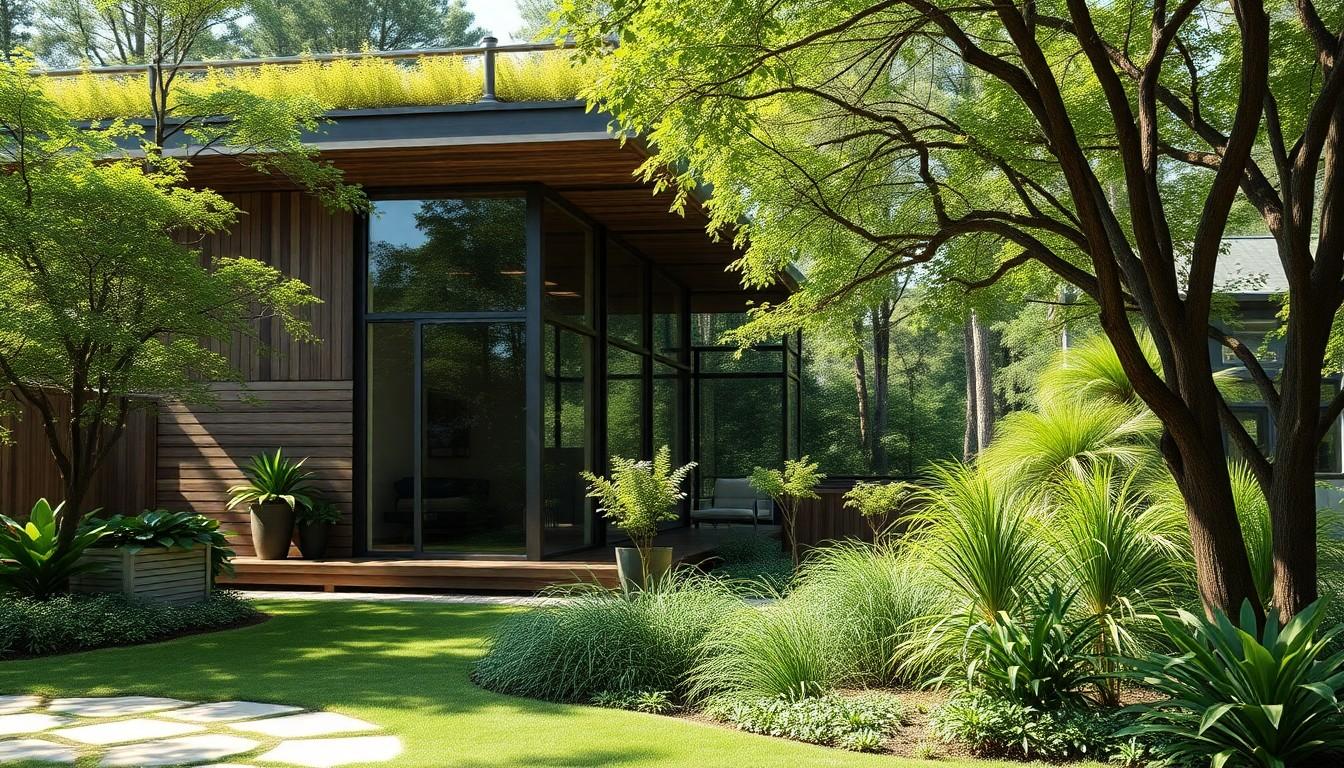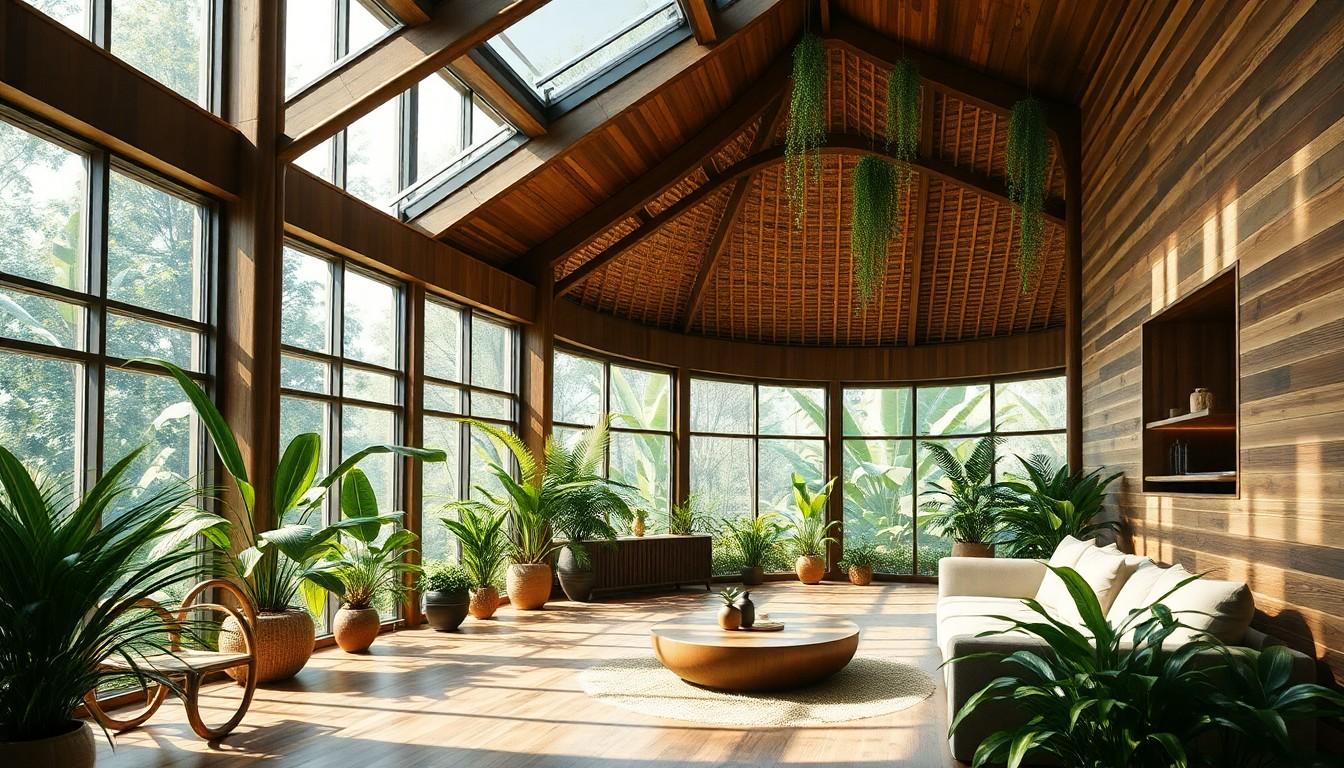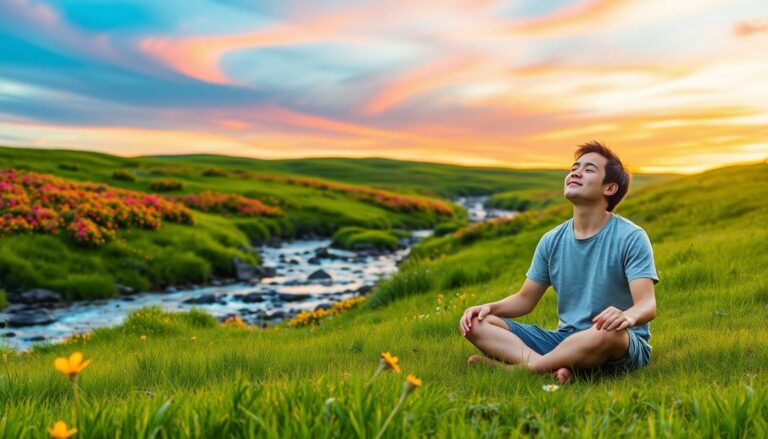Nature has always been the ultimate designer, crafting breathtaking landscapes and intricate ecosystems that inspire creativity. From the graceful curves of a leaf to the vibrant colors of a sunset, the natural world offers a treasure trove of ideas for innovative design. By tapping into these organic elements, designers can create spaces and products that not only look stunning but also resonate with a sense of harmony and balance.
Nature-Inspired Design Examples
Nature-inspired design draws heavily from the elements found in the natural world. Designers utilize various aspects, such as textures, forms, and colors, to create functional and aesthetically pleasing items. Organic shapes mimic those in nature, offering a sense of familiarity and comfort. Patterns observed in plants and wildlife inspire innovative designs, allowing for unique interpretations of traditional forms.
Natural light plays a crucial role in this design approach. Integrating large windows and open spaces helps bring the outside in, enhancing the overall atmosphere. Venues featuring curvilinear structures reflect the elegance of rolling hills or the fluidity of water, promoting serenity. Colors borrowed from nature, such as greens, browns, and blues, evoke feelings of relaxation and peace.
Biomimicry further emphasizes this design philosophy. This involves studying efficient systems in nature and applying these concepts to solve human challenges. For instance, materials inspired by the lotus flower’s properties offer self-cleaning capabilities, enhancing functionality and sustainability. Similarly, structures designed like termite mounds promote natural cooling, reducing energy consumption.
Eco-friendly materials are another vital element. Designers often select sustainable resources like reclaimed wood and recycled metals. These choices reflect a commitment to environmental responsibility while maintaining aesthetic appeal. Ultimately, nature-inspired design harmonizes humanity with the environment, creating spaces that nurture both physical and emotional well-being.
Key Principles of Nature-Inspired Design

Nature-inspired design incorporates key principles that resonate with organic beauty and functionality. This approach allows designers to create serene and harmonious environments.
Biomimicry in Design
Biomimicry exemplifies the direct application of nature’s solutions to human challenges. Designers study efficient systems, such as the self-cleaning properties of lotus leaves, to innovate new materials. Structures based on termite mounds provide insights for energy-efficient buildings. Every design inspired by nature showcases a commitment to functionality and sustainability. Nature’s wisdom influences everything from product design to architecture, promoting effective solutions.
Sustainability in Nature-Inspired Design
Sustainability serves as a foundational principle in nature-inspired design. Materials such as reclaimed wood and recycled metals exemplify eco-friendly choices that reduce environmental impact. Designers prioritize renewable resources and sustainable practices in their projects. Integrating natural elements fosters a connection between humans and nature, supporting emotional well-being. Spaces designed with sustainability in mind encourage responsible consumption, ensuring a healthier planet for future generations.
Notable Nature-Inspired Design Examples
Nature significantly influences various design fields. This section explores notable examples within architecture, product design, and fashion, showcasing how designers incorporate organic elements.
Architecture Inspired by Nature
Curvilinear forms dominate nature-inspired architecture, mimicking the shapes and structures found in the environment. Structures like the Eden Project in the UK feature geodesic domes resembling natural habitats, promoting ecological sustainability. Additionally, the Gherkin in London uses natural ventilation systems inspired by termite mounds, enhancing energy efficiency. Noteworthy is the integration of large glass panels, allowing natural light to flood interiors, fostering a connection with the outside world. Other examples include biomimetic buildings that utilize materials and shapes based on natural phenomena, attracting attention for their innovative design and functionality.
Product Design Influenced by Natural Forms
Innovative product design often borrows characteristics from nature. For instance, furniture crafted to emulate organic shapes offers greater comfort and connection to the environment. The use of materials like bamboo showcases sustainability and strength, drawing from nature’s most resilient resources. Examples include water bottles designed with textures mimicking tree bark for improved grip. Additionally, lighting fixtures inspired by flower petals create stunning visual effects while maintaining energy efficiency. Designers continually look to natural patterns, incorporating them into everyday products that combine beauty and functionality.
Fashion and Textiles Derived from Nature
Fashion designers frequently use elements derived from nature to create impressive collections. Textiles made from organic materials, such as hemp and organic cotton, promote sustainability while enhancing comfort. Patterns inspired by flora and fauna often grace the runways, drawing attention to the intricate beauty of the natural world. Notable brands incorporate eco-friendly dyes and manufacturing processes, reducing environmental impact. Additionally, accessories that use materials like cork and recycled plastics highlight a commitment to responsible consumption. This emphasis on natural inspirations fosters deeper connections between consumers and the products they choose.
Benefits of Nature-Inspired Design
Nature-inspired design offers numerous benefits that enhance aesthetic appeal and functionality. Creating environments that incorporate natural elements promotes emotional well-being, providing a sense of calm and connection to the outside world. Spaces enriched with organic shapes and colors evoke familiarity, reducing stress and fostering relaxation.
Incorporation of natural light significantly improves indoor environments. Large windows and open spaces bring in sunlight, which enhances mood and productivity. Natural materials, such as reclaimed wood or stone, contribute to healthier indoor air quality, reducing the reliance on synthetic alternatives that can be harmful.
Sustainability stands as a cornerstone of nature-inspired designs. Eco-friendly practices in sourcing materials ensure minimal environmental impact, contributing to a more sustainable future. Renewable resources promote a circular economy, minimizing waste and making efficient use of available materials.
Biomimicry serves as a practical approach in nature-inspired design. Solutions modeled after natural systems lead to innovations addressing human needs, like self-cleaning surfaces and energy-efficient structures. This connection with nature not only inspires creativity but also drives advancements in technology and design.
Nature-inspired design encourages a stronger bond between humans and their environments. By integrating elements from nature, these designs enrich user experience and nurture appreciation for the natural world. Ultimately, benefits extend beyond aesthetic value, promoting ecological responsibility and a vision for a harmonious relationship with the planet.
Promote Well-being and Ecological Responsibility
Nature-inspired design is more than just an aesthetic choice; it’s a philosophy that fosters a deeper connection between people and their environments. By embracing organic shapes, sustainable materials, and biomimicry principles, designers create spaces and products that promote well-being and ecological responsibility.
This approach not only enhances the beauty and functionality of designs but also encourages a more sustainable future. As the world continues to prioritize environmental health, nature-inspired design will play a crucial role in shaping innovative solutions that harmonize with the planet. Embracing these principles leads to a richer experience for users while nurturing the Earth for generations to come.




